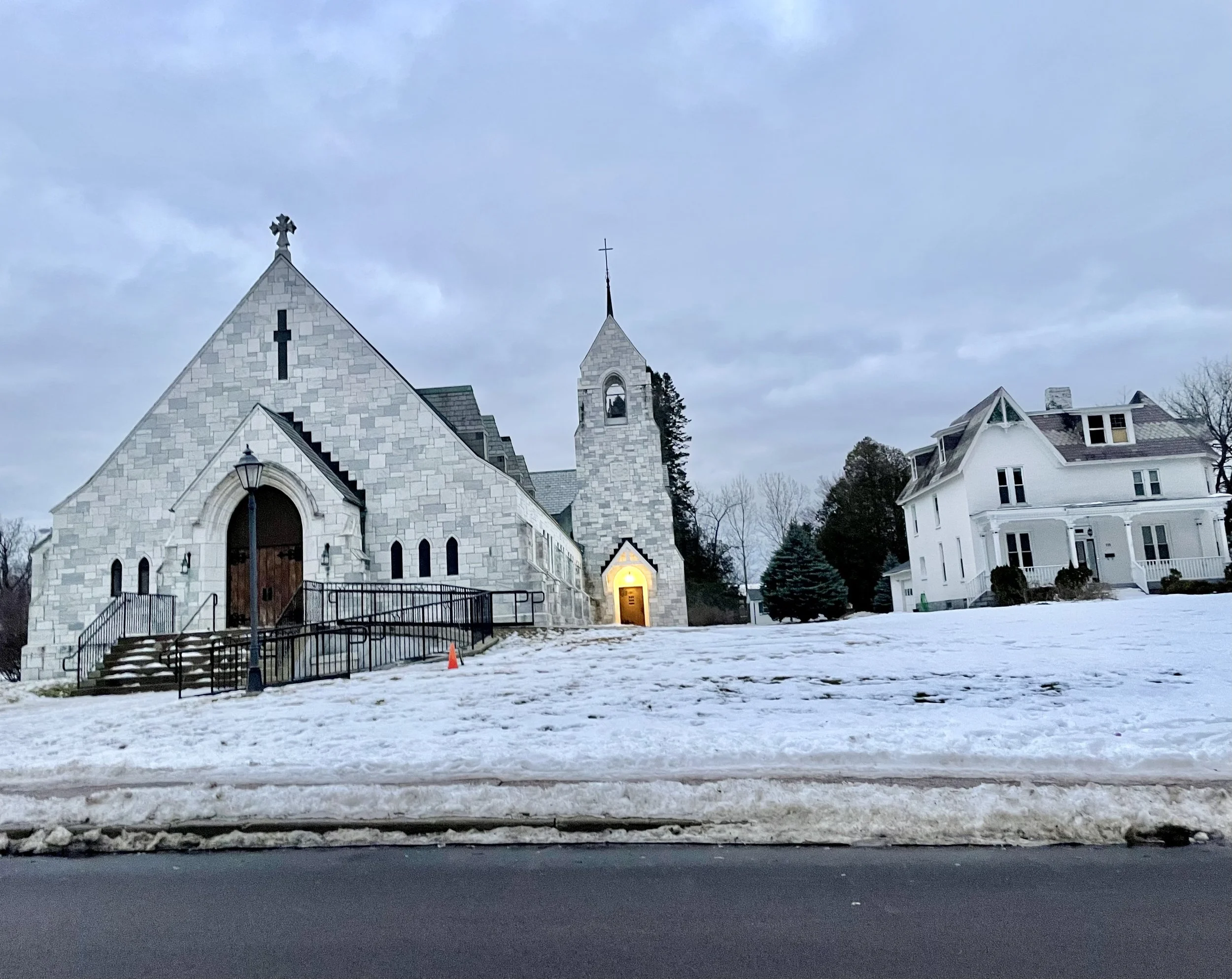St. Stephen’s architectural history at crux of demolition appeal
A public hearing to appeal the demolition of St. Stephen Catholic Church (115 Barlow Street) will be held this week on Thursday, Feb. 16 at 6:30 pm at City Hall Chambers.
Plans to demolish Winooski’s St. Stephen Catholic Church have stalled after more than 80 Winooskians signed an appeal letter asking city officials to stop the project. The crux of the appeal centers on the church’s architectural and historical significance and that its demolition may go against Winooski’s municipal plan.
“When we have one of these architectural gems that’s significant because of the architect who designed it, it’s really worthy of preservation,” said Britta Fenniman Tonn, a historic preservationist among the group of residents who submitted the appeal.
Burlington-based Sisters and Brothers Investment Group, a company run by the area’s prominent Handy siblings, is under contract to purchase the church from the Roman Catholic Diocese of Burlington. The church closed in 2020, and nearby St. Francis Xavier Parish welcomed the former’s congregants soon after. St. Francis Xavier was put in charge of the church’s future and granted a permit for demolition in December 2021.
A group of Winooski residents submitted the appeal on Jan. 4. A public hearing is set for Feb. 16, where the city Development Review Board will either uphold or overturn the demolition permit.
The Gothic Revival–style church was designed by the Boston architecture firm McGinnis & Walsh and built from 1928 to 1929. McGinnis & Walsh became nationally renowned for its church architecture in the early 20th century.
“What's probably most significant is that they're built of Proctor marble,” Fenniman Tonn said. “The marble is incredibly famous and just a really beautiful building material that we don't see a lot of up here.”
Proctor marble comes from Proctor, in Rutland County, where the Vermont Marble Company was once headquartered. In the early 20th century, the company was once the largest corporation in the country. It employed thousands of people, and the marble was used in buildings all over the United States, including the Jefferson Memorial and portions of the U.S. Supreme Court Building.
How the architecture and marble made their way to Winooski likely has roots in the immigration and prosperity that the city experienced during and after the Civil War, Fenniman Tonn said.
“The original St. Stephen's Church was built in 1872 for mostly Irish immigrants. French Canadian immigrants were coming to Winooski to work in the mills, and basically, anytime there was a war, or in the aftermath of a war, Winooski saw a lot of prosperity because the mills were making the cloth for uniforms,” Fenniman Tonn said. “So they saw an influx of people coming to Winooski in the 1860s, 1870s, and by 1928, they wanted a larger, more modern church, and the Gothic Revival style was popular at that time.”
Appellants believe the church’s demolition goes against a core element in the Winooski Master Plan, adopted in 2019 by the city council and planning commission. The plan sets strategic goals and objectives for the city’s land use and infrastructure development. One of its goals has to do with protecting, preserving, developing and using Winoosk’s historical, cultural and architectural resources.
“Here we spent all this time and energy making this plan, and, even in 2022, celebrating 100 years of Winooski, there was a lot of discussion about Winooski being an opportunity city historically and currently,” Fenniman Tonn said. “ We see a contradiction here.”
St. Stephen’s may have documented history, but it lacks an official stamp. It’s not currently listed in the state or federal registers of historic sites.
“That’s really an unfortunate oversight because this building absolutely has the architectural and historical significance, probably even for the national register listing,” said Fenniman Tonn.
The parish house next door on the lot is, however, listed in the state register, but there is only a brief mention of the church itself in its entry.
“That might be because the national and the state register documentation happened in the 1970s, and a church like that was hardly considered historic at that time,” Fenniman Tonn said. “Something that was barely 50 years old was like, maybe we'll wait until this gets a little older.”
Fenniman Tonn was unsure if the lack of a historical place listing would impact the appeal.
It might not matter anyway, Fenniman Tonn said, because the city’s zoning rules for historic preservation “really have no teeth.”
“There would need to be a local method of designating these buildings as important and historic, and that be written into zoning,” Fenniman Tonn said, “because you can't really use state or national register listing to enforce local zoning.”
Appellants believe the church can be adapted for new use.
“I am absolutely not anti-development,” said Fenniman Tonn. “I think developing housing units is one of the things that we need to be focusing on the most right now, but that said, it’s a three-acre lot. Demolition of the building to be able to clear the lot for development is not the only way forward, and it's not the only option that the Catholic Church has for deconsecrated buildings.”
There are rules in Catholic canon law for what can happen to a closed church to protect what was a place of divine worship and to ensure reuse is not going to be in conflict with Catholic values. The Winooski News reached out to St. Francis Xavier Parish for comment but did not respond.
St. Stephen’s isn’t alone. The Cathedral of the Immaculate Conception in Burlington was
granted a demolition permit last month, and a preservation group appealed the permit at a public hearing soon after. Burlington’s development board upheld the permit.
Fenniman Tonn hopes St. Stephen’s doesn’t follow suit.
“We don’t have a lot of more high style, super intact, historic buildings,” the preservation worker said. “That’s in part to the fact that Winooski has historically been a milltown — a community where you didn’t have a lot of wealthy people. I think that’s a really important part of Winooski’s story.”

